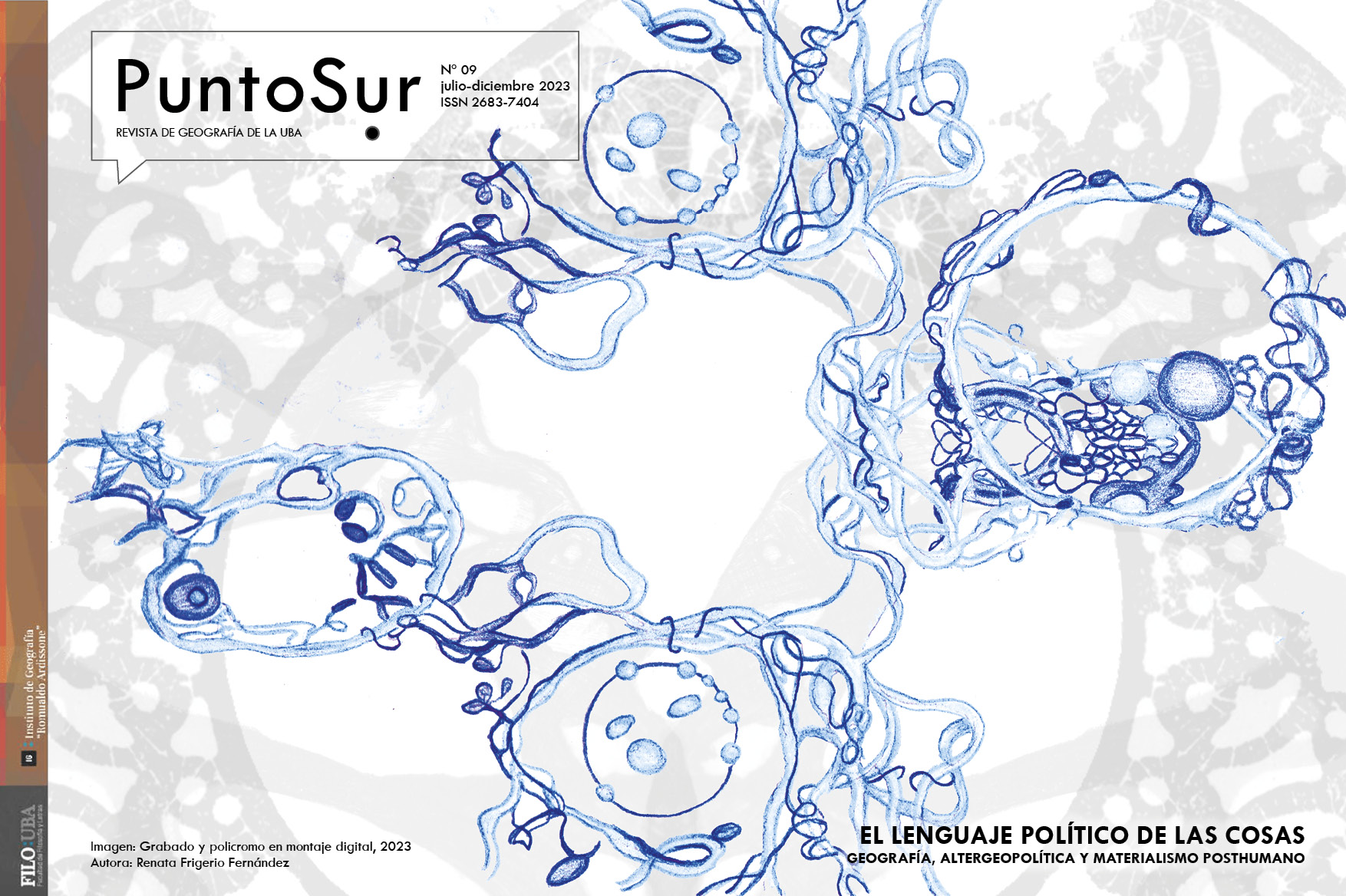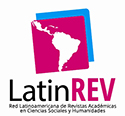Listening to the Vibrant Matter
Inhabiting and Remembering the Territory through Sensory Films
Abstract
In their ways of accounting for the extractivist advance, the territorial dispossession and the extermination of the Ayoreo world, La memoria del monte (2018) and EAMI (2022) by the Paraguayan director Paz Encina propose an aesthetic of memory that dialogues with the conception of space of that native community. The work of memory assumes here a cosmopolitics that redefines the relationships between humans and more than humans in a given territory. Based on studies on new materialisms, reflections on Amerindian ontologies, sensory anthropology and the anthropology of sound, this essay seeks to discuss the ways in which Paz Encina’s exercises rearticulate the order of the sensible to include the expressiveness and agency of the “more than human”. In this article I am interested in showing that soundscapes put on stage a vibrant materialism of a world that “makes itself heard” and allows not only to transmit a memory of a territory in process of destruction but it also translates in aural terms the continuity between the forest as a geographical space and the forest as an ontological multiplicity full of relationships, perspectives and temporalities.Downloads
References
Andermann, J. (2021). Memories of Extractivism: Slow Violence, Terror, and Matter. Journal of Latin American Cultural Studies 29(4), 537-554. https://doi.org/10.1080/13569325.2020.1805589
Bennett, J. (2022). Materia vibrante. Buenos Aires: Caja Negra.
Casaccia, G. M. (2009). El reclamo territorial Ayoreo Totobiegosode. Avá. Revista de Antropología, 14, 1-19.
Depetris Chauvin, I. (2019). Geografías afectivas. Desplazamientos, prácticas espaciales y formas de estar juntos en el cine de Argentina, Chile y Brasil (2002-2017). Pittsburgh: Latin American Research Commons.
Depetris Chauvin, I. (2020). Espacios Insulares. Documental y etno-cartografía afectiva de la cultura Rapanui. En J. Campo, T. Crowder-Taraborrelli, C. Garavelli, P. Piedras, K. Wilson. (Eds). El cine documental una encrucijada estética y política : inquisiciones contemporáneas al sistema audiovisual (pp. 55-76). Buenos Aires: Prometeo Libros.
Depetris Chauvin, I. (2022). Materia vibrante. Recorridos sensoriales y producción de lugar en el documental Homem-Peixe (2017) de Clarisse Alvarenga. En G. Girardi, W. Machado de Oliveira Junior y F. Gasparotti Nunes (eds.), Pegadas das imagens na imaginação geográfica pesquisas, experimentações e práticas educativas (pp. 225-250). São Carlos: Pedro & João Editores.
Despret, V. (2022). Habitar como un pájaro: modos de hacer y pensar los territorios. Buenos Aires: Cactus.
Doane, M. A. (1985). The Voice in the Cinema: The Articulation of Body and Space, En: Weis, Elizabeth (ed.), Film Sound: Theory and Practice. (pp. 162-176). Nueva York: Columbia University Press.
Domínguez, A. L. (2019). El oído: un sentido, múltiples escuchas, El oído Pensante, 7(2). http://revistascientificas.filo.uba.ar/index.php/oidopensante/article/view/7562
Encina, P. (2016). Ejercicios de memoria [Película]. Paraguay: Silencio Cine.
Encina, P. (2018). La memoria del monte [Cortometraje, 3.44 min]. Disponible online en: https://vimeo.com/306641228
Encina, P. (2022). EAMI [Película]. Paraguay-Francia- Alemania-Argentina-México-Estados Unidos-Países Bajos: Movie Partners In Motion Film; Eaux-Vives Productions; Silencio Cine; Black Forest Films; Fortuna Films; Revolver Amsterdam; Louverture Films; Piano Producciones; Sabate Films; Barraca Producciones; Sagax Entertainment; Estudios Splendor Omnia.
Erlmann, V. (2004). But What of the Ethnographic Ear? Anthropology, Sound, and the Senses. En V. Erlmann (Ed.). Hearing Cultures: Essays on Sound, Listening, and Modernity (pp. 1-20). Londres: Bloomsbury Academic.
Feld, S. (1996). Waterfalls of a Song: An Acoustemology of Place Resounding in Bosavi, Papua New Guinea. En S. Feld y K. H. Basso (eds.), Senses of Place (pp. 93-135). Santa Fe, NM: School of American Research Press.
Fornoff C. y G. Heffes. (2021). Pushing Past the Human in Latin American Cinema. Albany: SUNY Press.
Haraway, D. (2016). Antropoceno, Capitaloceno, Plantacionoceno, Chthuluceno: Generando relaciones de parentesco. Revista Latinoamericana de Estudios Animales, III(1): 15-26.
Henley, P. (2018). Ver, escuchar, sentir: el sonido y el despotismo del ojo en la antropología visual. Cine Documental 19, 166-190.
Inspiradas Cultural. (12 de octubre de 2022). La persistencia de escenificar (en) la memoria (Archivo de video). Recuperado de https://www.youtube.com/watch?v=06yTn0y2eus [ Links ]
Kohn, E. (2021). Cómo piensan los bosques. Hacia una antropología más allá de lo humano. Buenos Aires: Hekht.
Labelle, B. (2018). L’écoute par le dessous, On Air Carte blanche à Tomás Saraceno. Jamming with… Le magazine du Palais de Tokyo.
Mignolo, W. (2010). Aiesthesis decolonial, Calle 14: Revista de investigación en el campo del arte 4(4): 10-25.
Munro, K. (2017). Rethinking first-person testimony through a vitalist account of documentary participation. Frames Cinema Journal 12, 1-15.
Noguera, P. (2004). El reencantamiento del mundo. México: pnuma.
Ochoa Gautier A. M. (2014). Aurality: listening and knowledge in nineteenth-century Colombia. Duke University Press.
Ochoa Gautier, A. M. (2016). Acoustic Multinaturalism, the Value of Nature, and the Nature of Music in Ecomusicology. Boundary 43(1): 107–141.
Pick, A. y Narraway, G. (2013). Screening Nature: Cinema beyond the Human. Nueva York: Berghahn.
Polti, V. (2020): Subjetividad, identidad y memoria a través del sonido, Sulponticello 70.
Rancière, J. (2009). El reparto de lo sensible. Estética y política. Santiago: LOM.
Russell, C. (1999). Experimental ethnography: the work of film in the age of video. Durham, Inglaterra: Duke University Press.
Ruiz, R. (2000). Poética del cine. Santiago de Chile: Sudamericana.
Russo, E. (2020). Paz Encina: Voces en la oscuridad, Caravelle 114, 79-94.
Stengers, I. (2014). La propuesta cosmopolítica, Revista Pléyade 14: 17-41.
Svampa, M. (2019). Las fronteras del neoextractivismo en América Latina. Conflictos socioambientales, giro ecoterritorial y nuevas dependencias. México: CALAS.
Viveiros de Castro, E. (2010). Metafísicas caníbales. Líneas de antropología postestructural. Buenos Aires: Katz.
Wiedemann, S. (2020). Em Direção a uma Cosmopolítica da Imagem: Notas para uma Possível Ecologia de Práticas Cinematográficas. Arteriais. UFPA 6(10): 104-118.
Copyright (c) 2023 Irene Depetris Chauvin

This work is licensed under a Creative Commons Attribution 4.0 International License.






















